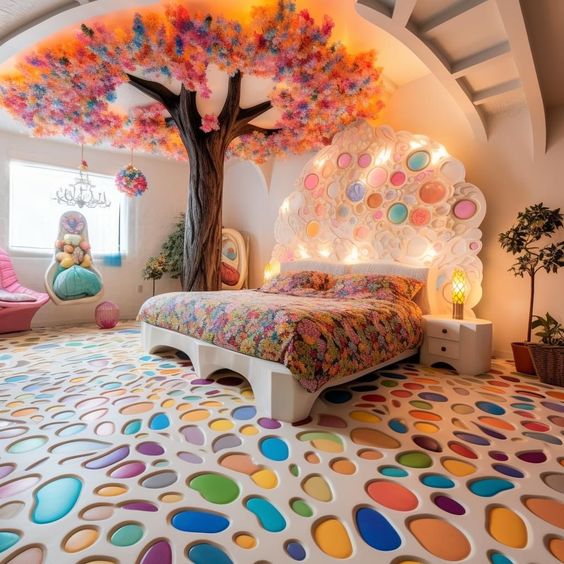Calcium Sulfate Hemihydrate is the main ingredient of Plaster of Paris (POP), which is a fast-drying gypsum plaster. Plaster of Paris has been around since antiquity and it gets its name from the abundance of gypsum found in Paris. Plaster of Paris is great for producing casting moulds since it doesn’t shrink or crack after it dries. It is often used to fabricate and maintain plasterwork ornamentation on ceilings and cornices.
Plaster casts are used in the medical field to immobilise broken bones while they heal, while many modern orthopaedic models are made of fibreglass or thermoplastics. Plaster of Paris is a versatile construction material used for everything from drywall repair to creating a fake ceiling. Read the article to learn more about Plaster of Paris usage.
See also: What is gypsum plaster, and what are its benefits?
Plaster of Paris: Formation
Gypsum crystals are heated to 160-170 °C (248-356 °F) to create the Plaster of Paris. Steam losses account for around 14.7% of the total water content loss. The first settling plaster, sometimes known as “Plaster of Paris,” is the hemihydrate of calcium sulphate. The atomic symbol for Plaster of Paris is CaSO4- 1/2 H2O. POP’s chemical name is calcium sulphate (or CaSO4, with Ca representing calcium and SO4 representing sulphate). Plaster of Paris, composed of calcium sulphate and two molecules of water, can be easily transformed into its original, rock-like shape by simply adding water.
Plaster of Paris: Types
The following are the three most common varieties of POP-
Gypsum plaster
Creating this requires heating gypsum to a temperature of 300 degrees Fahrenheit. The chemical transformation to anhydrite occurs at temperatures over 392 degrees Fahrenheit. Gypsum is made by adding water to either gypsum plaster powder or anhydrite.
Lime plaster
Lime Plaster is a construction material made from sand, calcium hydroxide, and inert fillers. Quick lime is made by heating limestone, while slaked lime is made by mixing it with water. Wet putty or white powder are common names for this substance.
Cement plaster
Cement plaster is a material made by combining Portland cement, sand, and water with a suitable plaster. Smoothness is achieved by applying it both inside and out. In many cases, the cement plaster is followed by a layer of gypsum plaster.
Plaster of Paris: Advantages
- It produces a thick layer, making it resistant to blows.
- It doesn’t develop cracks upon drying since it doesn’t shrink as it hardens.
- It possesses thermal conductivity, preventing heat from being transferred into the structure.
- It may be used as an insulating and fireproofing material.
Plaster of Paris: Disadvantages
- It’s more costly than your typical cement or lime cement.
- Due to its low solubility in water, it is advisable not to use it in wet or humid environments.
- The finishing process with plaster of Paris requires expert work, which drives up the price of labour.
Uses of Plaster of Paris (POP)
POP is used for a variety of purposes. Some of the most common uses of Plaster of Paris include:
Sculpting intricate figurines and statues
Plaster of Paris is a favoured medium among artists for crafting intricate figurines and statues. Its fine texture and ease of moulding make it ideal for capturing even the smallest details in sculptures. Whether you’re sculpting a lifelike portrait or an abstract masterpiece, Plaster of Paris provides a versatile and expressive canvas for artists to bring their visions to life. Its affordability and wide availability also make it a popular choice for both novice and professional sculptors.

Source: Hometalk.com
Creating decorative wall panels and friezes
Decorative wall panels and friezes have long been used to embellish interiors with elegance and charm. Plaster of Paris enables the creation of stunning ornamental designs, intricate patterns and relief work for walls. Skilled craftsmen use this versatile material to produce unique wall decorations, transforming plain surfaces into captivating works of art. From classical motifs to contemporary designs, the adaptability of Plaster of Paris allows for endless creative possibilities in interior decor.

Source: Ornamental Plaster Work (Pinterest)
Making ornate ceiling medallions and mouldings
Ornate ceiling medallions and mouldings add a touch of grandeur to architectural spaces. Plaster of Paris is the preferred choice for crafting these exquisite adornments due to its lightweight yet durable nature. Ceiling medallions encircle light fixtures, while mouldings enhance the visual appeal of ceilings and walls. Plaster of Paris offers unparalleled versatility, enabling the creation of intricate and custom designs. Whether adorning a historic building or enhancing a modern home, the use of Plaster of Paris elevates the aesthetics of interior spaces to new heights.

Source: Ceiling Medallions and Decor (Pinterest)
3D Printing
Plaster of Paris, or gypsum, may be used in 3D printing. The inkjet nozzle sprays the water onto the paper.

Source: Pinterest
Crafting intricate architectural details for buildings
In the construction industry, Plaster of Paris is used to create exquisite works of art for adorning and enhancing buildings and other structures. Wood and stone imitations are very common in historic architecture. Artisans used to make sculptures and ornamental metal castings using Plaster of Paris. Since the 16th century, it has been widely employed in constructing historical buildings.

Source: Pinterest
Burial services
It is common practice for funeral directors to use Plaster of Paris to repair any broken skin or fill up any open wounds before a burial.

Source: Pinterest
Medicine
An orthopaedic cast is a protective covering used to aid in the healing process of fractured bones. It is common practice to use plaster of Paris in place of bone grafts and to patch up bone defects. It’s the material of choice for making comfortable and secure bandages.

Source: Pinterest
Radiotherapy
During radiation treatment, it is utilised to create custom immobilisation shells for each patient. The patient’s head and neck imprints are created using plaster bandages.

Source: Pinterest
Fireproofing and fire protection systems
Plaster of Paris has long been recognised as an effective tool for fireproofing and fire prevention systems in residential and commercial buildings. Plaster of Paris is a wet mixture, so when it is ignited, all the stored water is released as water vapour, slowing the spread of the fire.

Source: Pinterest
Miscellaneous
POP is also used to craft toys, inexpensive decorations, cosmetics, blackboard chalk, and photographs.

Source: Pinterest
Plaster of Paris in home décor
Plaster of Paris wall murals

Source: Pinterest (2040762325632996/Shivangi)
Plaster of Paris false ceiling and flooring

Source: Pinterest (21040323253093494/ Junie Porter)
Plaster of Paris fancy stairway

Source: Pinterest (3307399720002677/ Kathy Leary)
Plaster of Paris partition

Source: Pinterest(795729827936747054/ Shabnam)
Housing.com POV
Plaster of Paris is widely used for home decor because of its easy usability, durability and the final result that it gives. It is a very important material when you are working at designing or renovating your house.
FAQs
What are some uses of Plaster of Paris?
Plaster of Paris, also known as calcium sulphate, can be used for more than one thing. It has been used in place of bone grafts and to fill in holes in bones. It has been used instead of bone grafts in spinal surgery. POP is also being looked into as a way to deliver antibiotics.
Is Plaster of Paris waterproof?
Plaster of Paris cannot resist water. Due to its dry and porous nature, any water coming in contact with its surface gets absorbed.
How do doctors use Plaster of Paris?
When Plaster of Paris is mixed with water and put on broken limbs, it hardens into a mass that keeps the bone joints in place. So, it is often used to set bone fractures.
| Got any questions or point of view on our article? We would love to hear from you. Write to our Editor-in-Chief Jhumur Ghosh at jhumur.ghosh1@housing.com |







